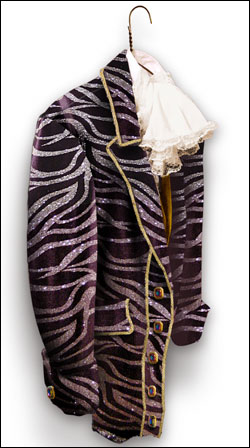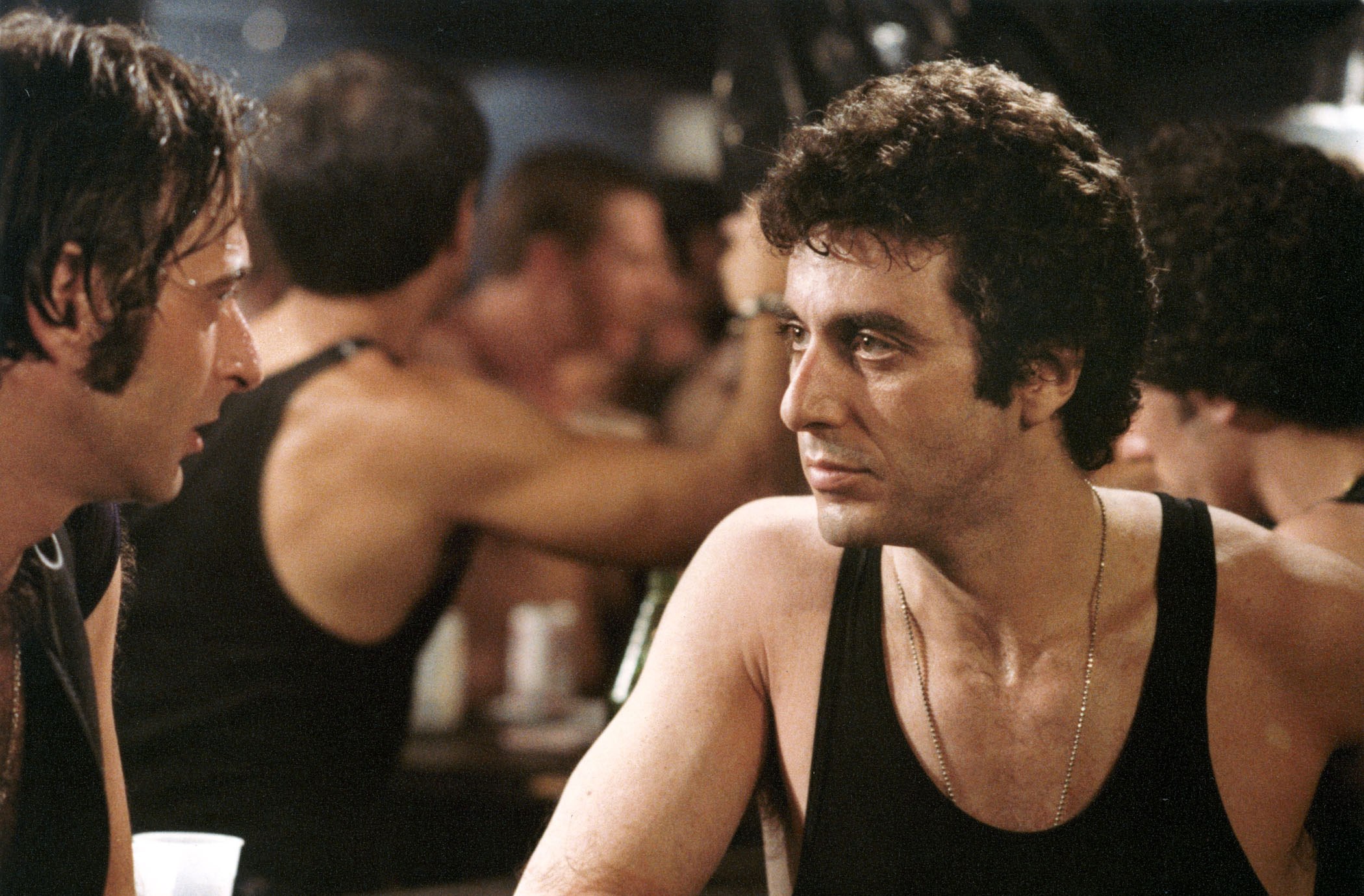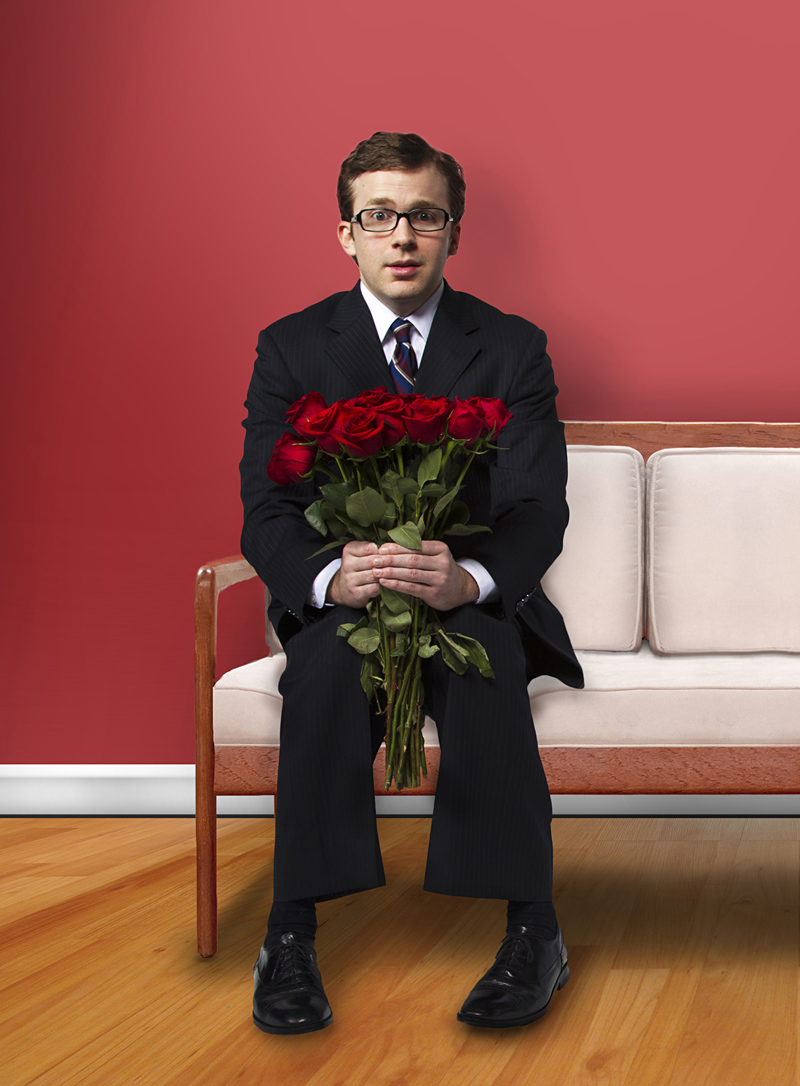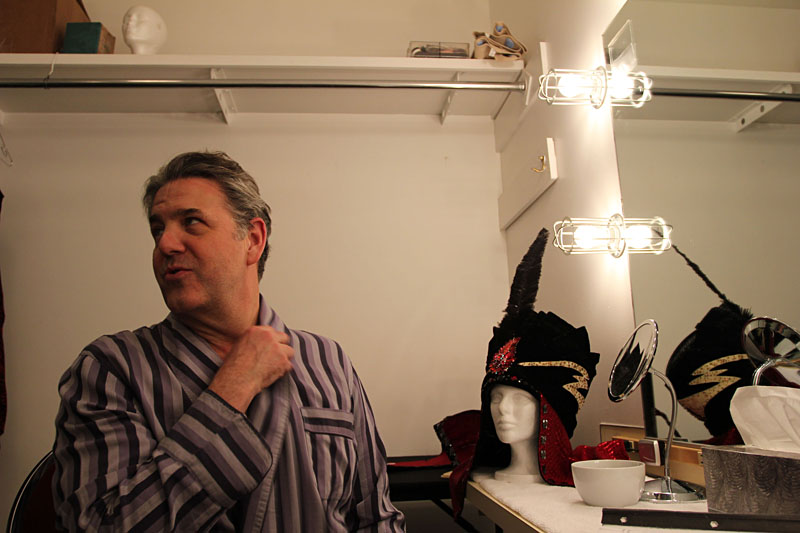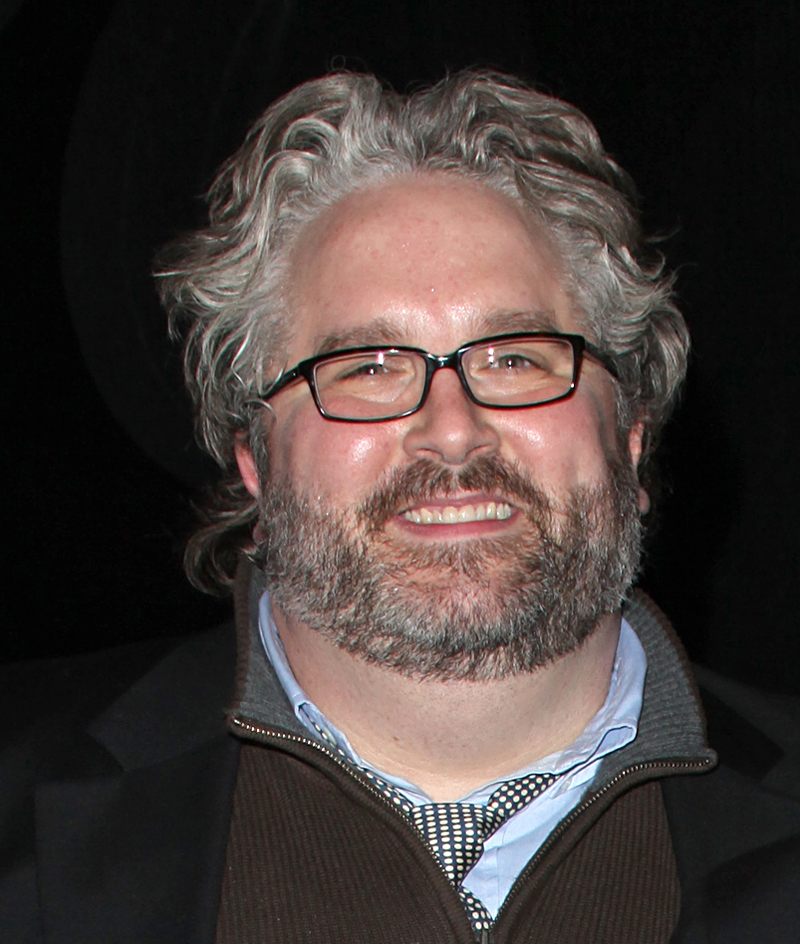IN 1959, LIBERACE won a libel suit against a London Daily Mirror columnist who had dared to suggest he was gay. This is something to ponder when you’re standing next to a cape made of purple ostrich feathers.
The Liberace Museum, where such costumes reside, is in a strip mall in Las Vegas. I’ve always thought of Las Vegas as the quintessential American city, full of bright lights, vast contradictions, and sweeping hypocrisies. It’s a hot, gaudy, thrilling, uncomfortable place where you feel required to flash a lot of money, though there’s next to nothing of lasting value in the whole damn town and you’re not quite sure who it is you’re trying to impress. Sin City is also conservative: The Las Vegas Review Journal pulled Lynn Johnston’s long-running For Better or for Worse comic strip back in 1993 when a teenage character came out of the closet. And Siegfried and Roy: They’re just good friends.
On the Sunday I show up at the Liberace Museum, there are maybe a dozen of us hanging around, mostly women with big hair and colorful shirts, and a couple gentlemen of a certain age. With still a few minutes before the tour begins, we’re all gathered in the waiting area watching an introductory video playing on a loop on a big-screen TV.
“Liberace was America’s first matinee idol,” the narrator is saying. The statement is accompanied by a vintage ’50s clip: Some swooning ingenue is singing a pop ditty about how positively mad with love Liberace makes her whenever he winks at the screen during his weekly broadcasts.
Soon, Liberace is high-kicking in spangled short-shorts with a baton. (“1976 was a special year, not only for America, but also for Liberace,” I read later from a title card in the time-line portion of the tour. “In honor of the United States bicentennial, he premiered his Red, White, and Blue hot pants costume at Radio City Music Hall in New York City.”) Everyone seems to have a sense of humor about this. One of the ladies on the benches lets out an affectionate laugh.
“Oh, goodness, I’ve never seen that one,” she says. Everybody murmurs appreciatively to one another when the narrator maintains that Liberace was a “one-of-a-kind” entertainer. His death, due to complications from HIV, is mentioned. His homosexuality is not.
THE TOUR FINALLY begins with our guide finding out where we’re all from, then asking us what words first come to mind when we hear the name Liberace. Everyone in the crowd is silent until someone comes up with “Mr. Showmanship,” Liberace’s self-created nickname. Then another fan offers “talented.” I consider saying “flamboyant,” but feel wary of upsetting the status quo here and instead keep my mouth shut.
“Wow,” says the guide after no one else speaks. “You know, you’re the first group I’ve ever had where somebody didn’t say ‘flamboyant.'”
Everyone sighs with relief and nods their heads in recognition. Good, we’re all thinking. Somebody said it. Now that’s out of the way.
The guide goes on to explain that, yes, Liberace was indeed flamboyant, but it was just an image he worked at very carefully. In real life, the man who regularly quoted Mae West (“Too much of a good thing is won-der-ful!”) was a shy, gentle, good-hearted soul who loved people and children and dogs.
“You know, Liberace lived just a few blocks from where we are now, and if you lived in Las Vegas, you would see him out and about,” she continues. “He was the kind of person who would come up to you in the supermarket, poke his head into your shopping cart, and say, ‘Whatcha gonna do with that chicken?'” She went on to explain how fond he was of exchanging recipes with total strangers.
We peruse the aforementioned time line next. You have to admire how much the man did with his life, this odd boy who was already playing with the Chicago Symphony by age 16 and who went on to make millions of dollars wearing purple ostrich feathers in a country whose heroes are baseball players. There are photos of Liberace shaking hands with Ronald Reagan and a note that the pianist was granted a private audience with the pope in 1956.
We file by his cars, including a 1962 mirrored limousine and a pink, sequined “Volks Royce” (a Beetle-Rolls Royce combo). I’m completely hooked by this point. I don’t need to hear that he’s gayit’s everywhere. And we all understand it, don’t we? The guide entertains us with more personal details, including the first mention that Liberace was, in fact, a Friend of Dorothy.
“Liberace wanted to have children, because he knew he’d be a good father,” she says. “But, you know, gays were not having committed relationships in the ’80s.” Liberace was 62 years old in 1980.
The entertainer himself explains his perennial bachelorhood in The World of Liberace, an “intimate” look at his life that was first aired on NBC in 1972 and is now playing in the gift shop on a television set just up above the cookbooks and hot-pants magnets.
“I suppose that as long as I do remain a bachelor, people are going to ask me why I have never married,” he is saying. “I don’t think many people know this, but I come from a family of divorce, and this has made an imprint on my mind. I came awfully close to getting married two or three times. But some incident occurred, you know, which gave me a warning of what to expect, and it kind of turned me off.”
We laugh at this now, as though nobody today would ever be taken in by such an obvious charade. We forget how most of the country only knows what it wants to know. We forget how people need to hear spoken out loud what never gets said. We forget how many people saw Wham!’s “Wake Me Up Before You Go-Go” video and still clung to the illusion that George Michael would make a great prom date.
It’s a heady feeling being in a place with an almost complete lack of irony. There’s a beguiling purity about it. You become enthralled by the innocence of the experience, and get excited by the possibility of believing in something so totally that you don’t question it anymore. It’s comforting, and it’s damaging. It’s America.
